Fermentation: How hard can it really be?
It’s an age old process that people have become afraid of in a world with fridges and freezers. But after trying it for the first time, Julia Platt Leonard is converted
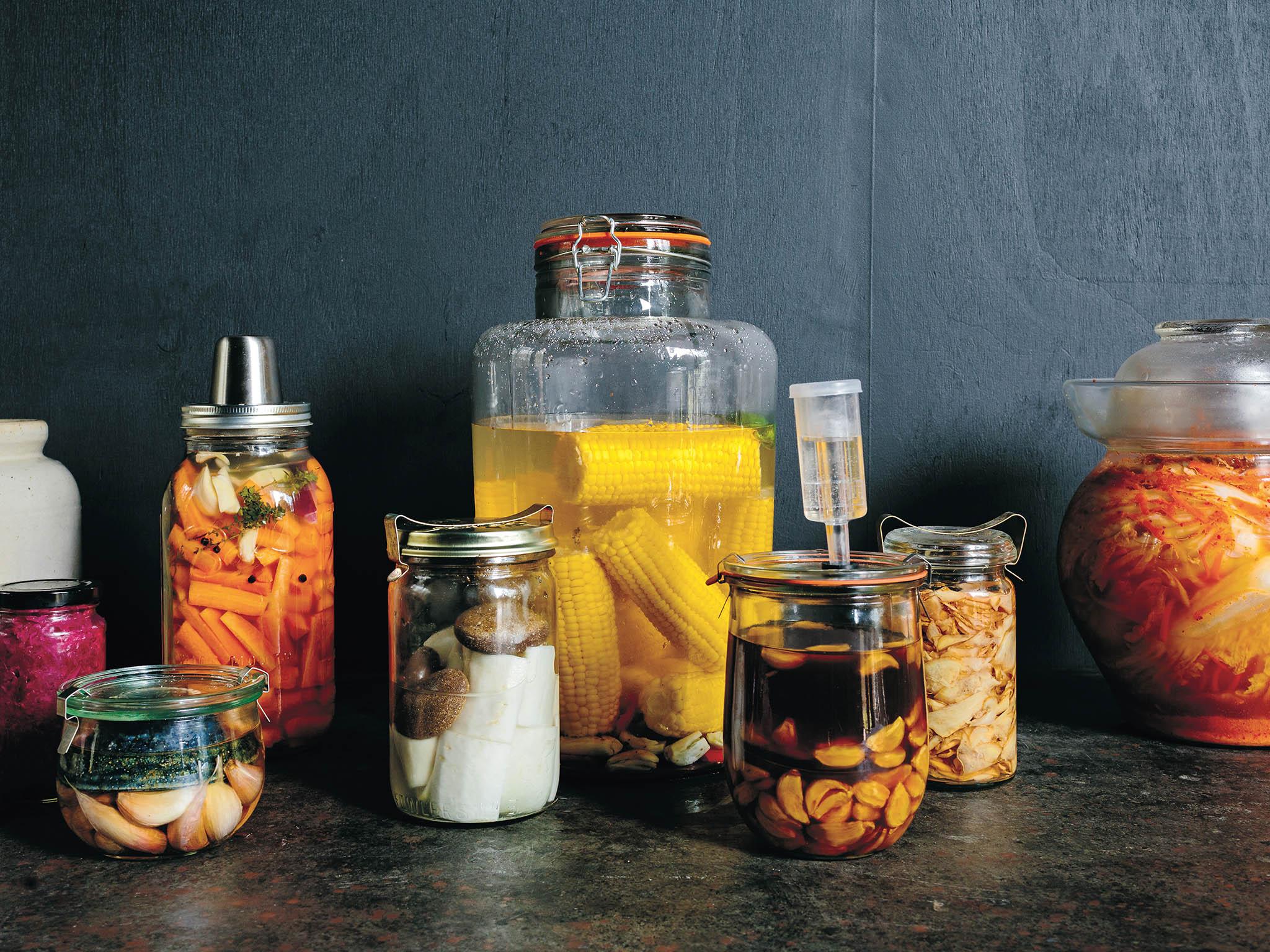
Preserving food isn’t new. We’ve been drying it, curing it, pickling it, and burying it (yes, in the ground) for thousands of years. I’ve always shied away from preserving, worrying that one false move in the kitchen and I could poison an entire dinner party. But all that was about to change: I was on a mission to learn how to ferment foods.
Fermented foods are the new holy grail in the food world, which is funny when you think that until the arrival of refrigeration we were fermenting foods all the time – leaving milk on the counter or placing chopped cabbage in a salt brine. Now it seems like you can’t pick up a menu without seeing fermented foods like kimchi, kombucha and kefir on it. Part of the reason is obviously taste but the other is that fermented foods have loads of health benefits including helping to restore healthy bacteria in our guts.
To get started, I needed a guide to hold my hand who comes in the form of Sharon Flynn. She’s been running The Fermentary in Melbourne, Australia where she sells her own fermented foods plus runs classes to would-be fermenters. With a round trip ticket to Australia not on the cards, I turned to her book instead. After contacting her, it turns out that I’m not the only one nervous about dipping my toes into fermenting. She says her students are almost always skittish at first, “Pasteurisation was fabulous but it did create unnecessary fear in the home kitchen.”
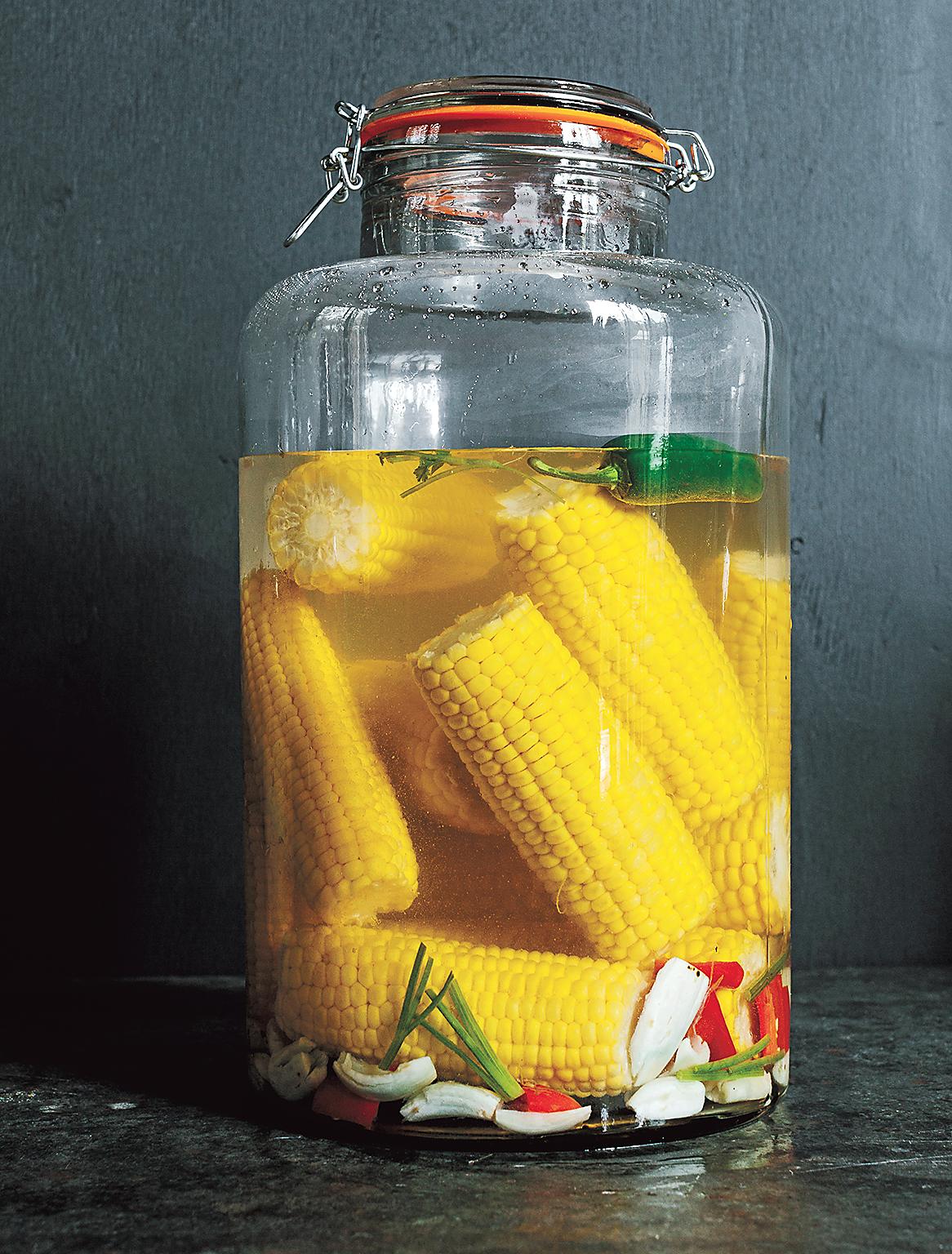
And while I’d lumped all preserving together, it soon becomes clear that fermenting is completely different. “Canning relies on killing all bacteria in order to preserve your food – often with vinegar or sugar and always with heat. Fermentation relies on the bacteria to do the preserving and the food remains raw,” she says.
Flynn’s book starts with the basic how-tos and how-not-tos then dives into different types of fermented foods – including vegetables, milk and dairy, drinks, Japan (a cuisine arguably built around fermented foods), and condiments and dressings. The recipes start with the simplest sauerkrauts and move on to brines and dry salt ferments and even fermented drinks.
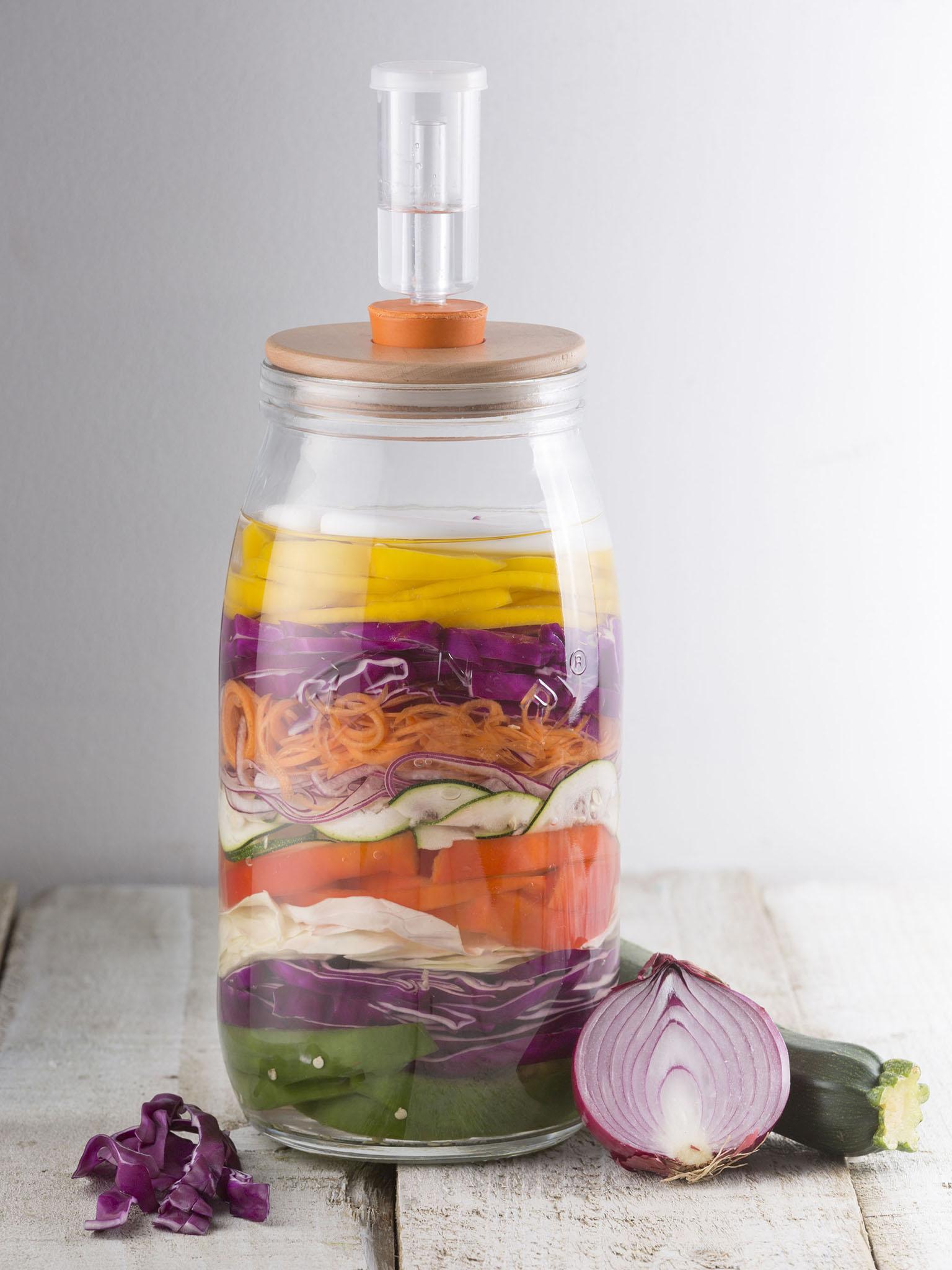
Reading her book, you can understand why her classes are so popular. She answers your questions before you think to ask and doesn’t overwhelm you with too much science. And very quickly, you figure out that it’s not that hard. And – surprisingly – it’s really fun.
Quickly I amassed a collection of glass jars and containers (see myth two). I also got my hands on a Kilner fermentation set. The classic Kilner jars are great for fermenting but their new set goes an extra step. Basically, it’s got a wooden push-top lid with an air lock system so carbon dioxide created during fermentation can escape without having to manually let the gas out. It also comes with a set of weights to keep food submerged under brine.
Day one I made a sauerkraut (still fermenting but the early signs are good) and then Flynn’s brine fermented green beans, which were as simple as packing beans into a jar and covering with brine. At her suggestion I added in some extras: lemon peel, mustard seed and garlic. They only need three to five days sitting at room temperature and they’ll be ready to eat. I also tried a Kkakdugi – a kimchi made from daikon radish – from a book called Kimchi by two sisters who run a family restaurant in Stockholm.
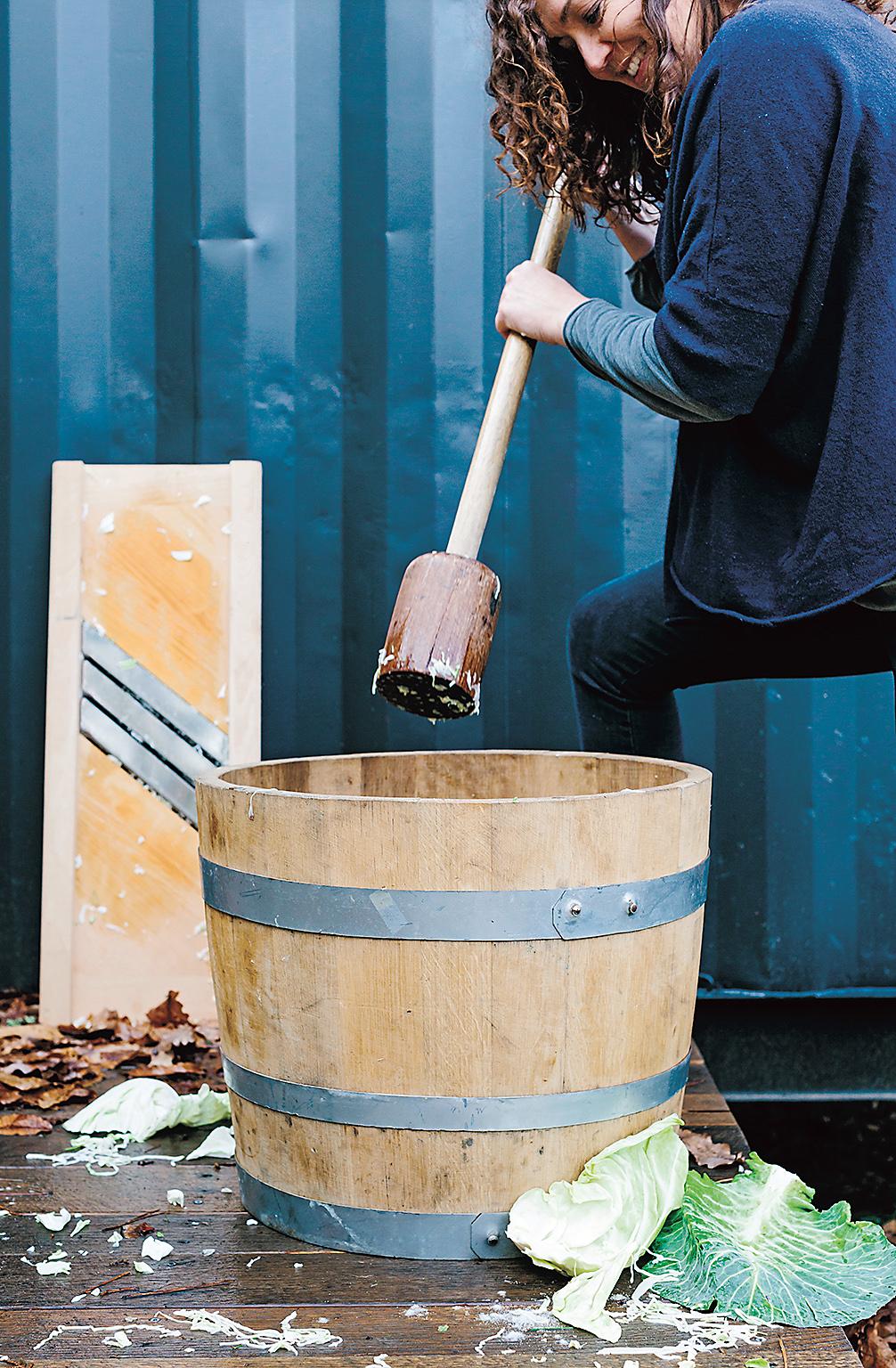
And what are Flynn’s favourites? A tough one but when pushed, “I love milk kefir and adding black sesame with a touch of brown – or better – coconut sugar) to it. It’s nutty sour, tangy and so good for you. Kimchi and Smokey Jalapeno Kraut are right up there for going with nearly everything and making an ordinary meal fabulous.”
In one week, I’ve gone from fear of fermenting to fanatical. Next up, I’m game to try Flynn’s recipe for yoghurt that uses chilli stems. Here are a few things I’ve learned:
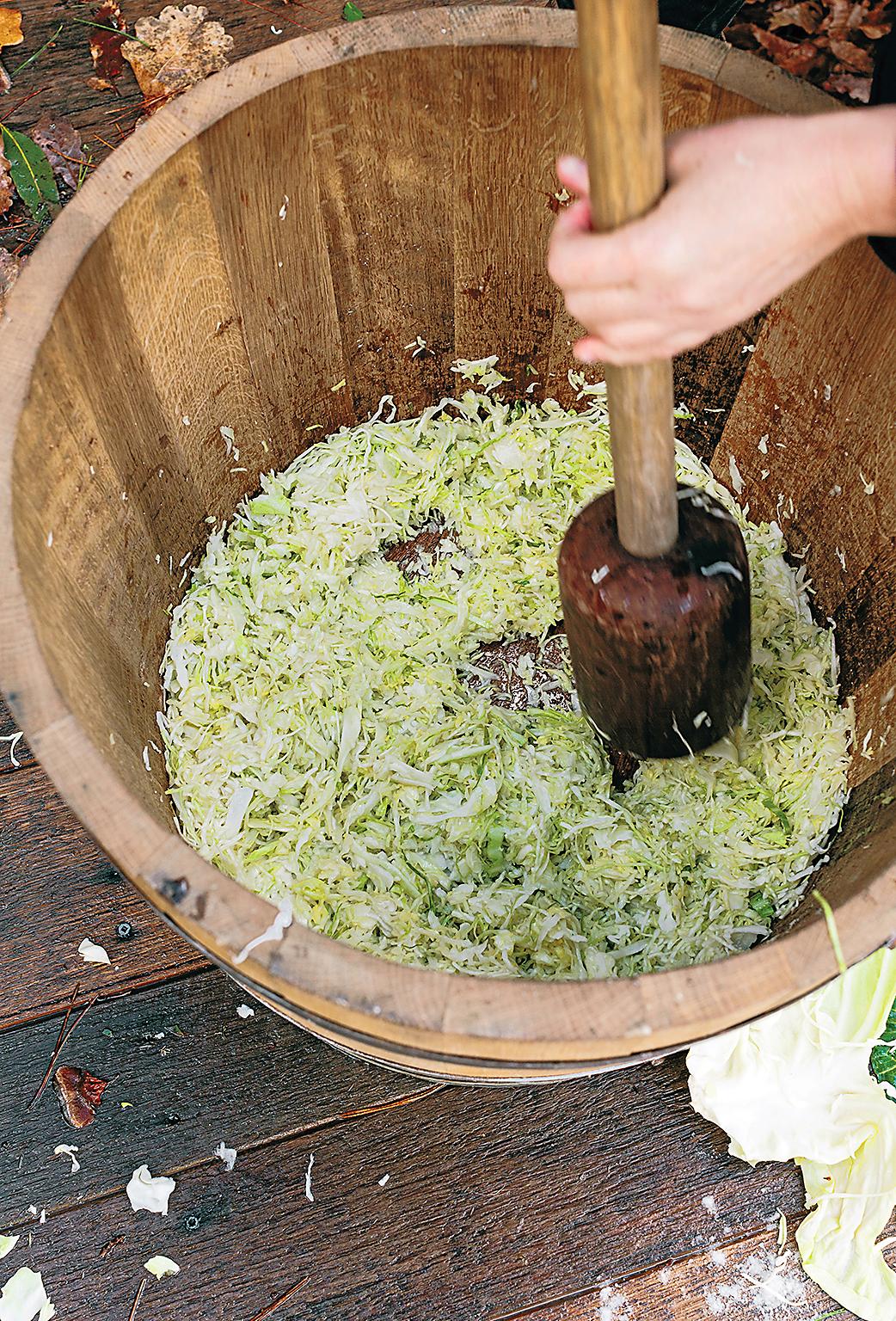
Myth 1: Fermenting can go horribly wrong
Fermenting is about trusting your senses and taste buds and having fun in the kitchen. “Enjoy the process – the worse thing that is going to happen is that it won’t work – just like any other kitchen flop. Not that serious, just disappointing,” Flynn reassures. “Obviously if there is black or coloured mould, if it’s soggy or slimy, smells wrong or tastes nasty – throw it. But often there are harmless yeasts on the surface that can be scraped off and what’s underneath is just fine.”
Myth 2: You need a lot of kit to ferment
It’s all pretty basic and none of it expensive, which is part of what Flynn likes about it. “My main wish is that there be no barrier for people to start fermenting – expensive kits and packets of starter culture and yeast are not necessary. Having said that – once you get into it there are some beautiful, often heirloom pieces you can get and enjoy sitting on your bench.”
Myth 3: It takes a lot of time to make fermented food
Yes, it can take a long time to ferment food but the actual preparation time is usually very short. Flynn calls it, “The slowest kind of fast food.” And there’s something mesmerising about seeing bubbles appear at the top of your sauerkraut and knowing that it’s doing something, even when you’re not.
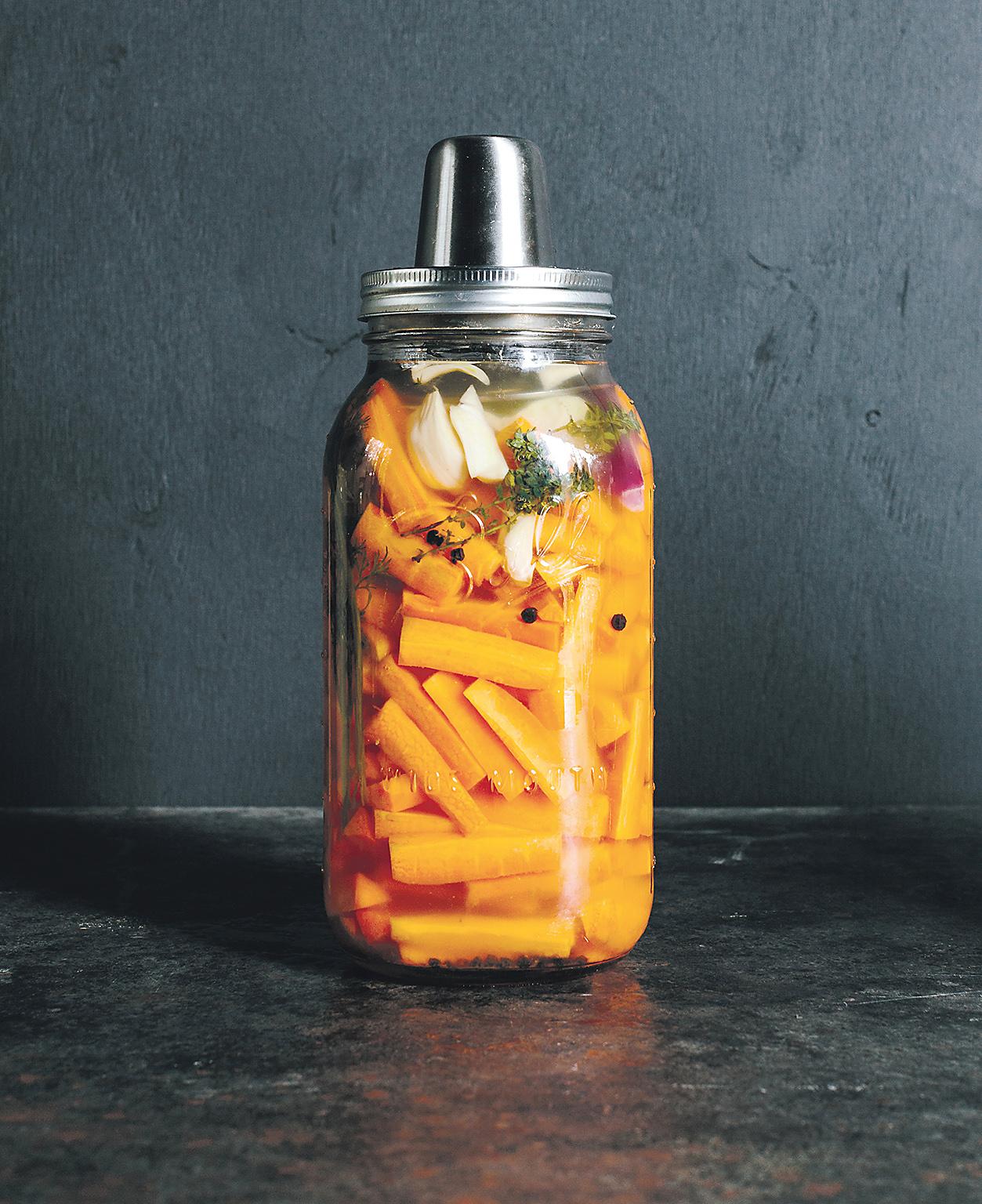
How to ferment carrots
Giving a child, or yourself, a fermented carrot stick to snack on is so many levels up on a regular carrot in flavour, and of course in nutritional value. Just like I promised, this is fast slow food ready to grab and eat at any time. All the preparation is done before. Just peel and cut the carrots into rounds or sticks, depending on how you’d like to snack on them. I like rounds because they are bite-sized and perfect for munching on while I’m at the computer or watching TV. Sticks are great for dipping and also to give the kids to take with them as an on-the-run snack – often in the car.
The brine ratio should be roughly 3%.
Preparation time: 5–10 minutes
Fermentation time: 1 wee
Equipment: 1 L (34 fl oz) jar, follower, weight your favourite flavour combination
300 g (10 ½ oz) carrots (or enough to fill your jar), peeled and chopped
about 2–3 tablespoons fine salt
1 litre (34 fl oz/4 cups) water (or enough to cover your carrots)
Add your favourite flavour combination to the jar if you wish. Fill the jar with the carrots. Make a brine with the salt and water and pour over the carrots, using as much as you need to cover them completely. Follow and weigh them down and seal the jar.
They are ready to eat when you think they are delicious (about a week). When you’ve decided they are sour enough, pop them into the fridge for safekeeping. They’ll last for months like that.
Ferment for Good: Ancient Foods for the Modern Gut by Sharon Flynn (Hardie Grant) £16.99; Kimchi: Essential Recipes of the Korean Kitchen by Byung-Hi & Byung-Soon Lim (Pavilion) £14.99
Join our commenting forum
Join thought-provoking conversations, follow other Independent readers and see their replies
Comments